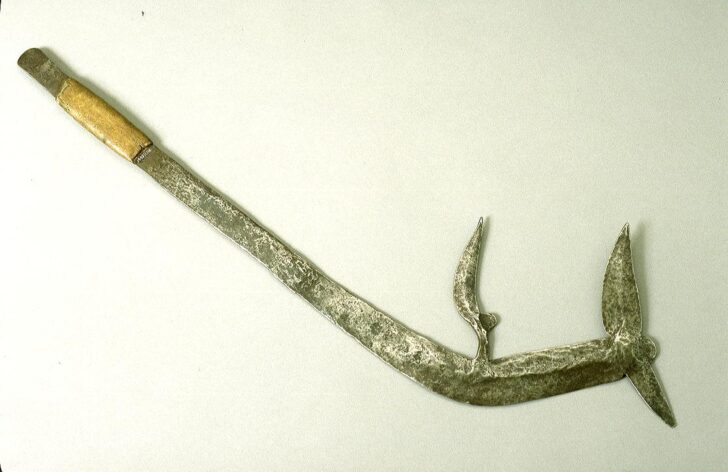Throwing knife
Masalit

Description
Subject Matter:
This throwing knife is typical of the northern African style. It is longer and lighter than the multi-bladed, short-stemmed knives of groups located to the south, in the present day Democratic Republic of the Congo. This throwing knife from Darfur is forged by Islamic smiths called haddad. It is usually highly polished and free of iron scale. Others that are made more recently are constructed using scrap metal.
There is little evidence that these throwing knives were ever used as offensive weapons. They often appear in military parades and other public occasions and are carried over the shoulder by the aristocratic elite of Darfur.
This throwing knife might also be seen at boys’ circumcision ceremonies. Elderly women relatives of the boys may dress up as men and carry weapons. The throwing knife or other weapon may also be brandished or clashed with the weapons of other women carrying weapons.
Reference:
Spring, Christopher. African Arms and Armour. London, UK: British Museum Press, 1993. [Page 76]
Physical Description:
This throwing knife has a long, slender shaft. The shaft curves slightly downward at its end. On the end of the shaft are two small, leaf-shaped blades which extend in opposite directions. Another small, leaf-shaped blade, or spur, protrudes downward from the inside of the main curve of the shaft. The handle of the knife is wrapped with leather.
Usage Rights:
If you are interested in using an image for a publication, please visit https://umma.umich.edu/request-image/ for more information and to fill out the online Image Rights and Reproductions Request Form.